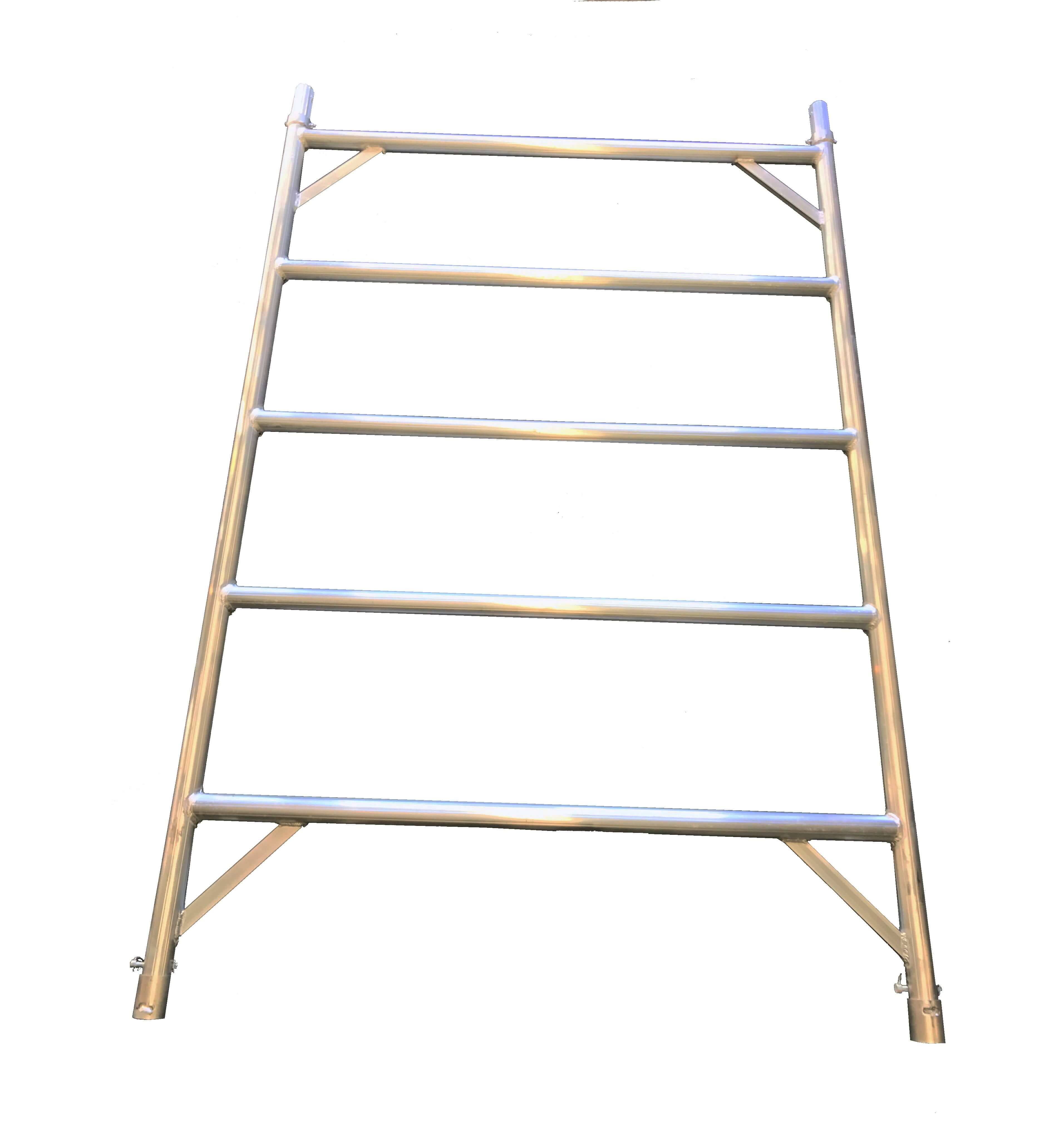Frame – A rigid structure formed of relatively slender pieces, joined so as to surround sizable empty spaces or non-structural panels.
In Scaffolding use, frames generally run perpendicular to the length of the scaffold run. Frames define the width of the scaffold, and they are also used to provide the height. Frames are used in Mobile Scaffolding to provide simplicity in use, transport and flexibility in construction.
This article will discuss the use of frames in Mobile Scaffolding, with particular emphasis on the Mr Scaffold Brand range of products.
Weight Capacity
Aluminium Scaffold is categorised into two different weight capacities. Light duty scaffold has a Safe Working Load (SWL) of 225kg per bay or tower. Medium duty scaffold has a SWL of 450kg per bay or tower. Frames for these different weight classes are slightly different in manufacture, with the light duty range (EASYSCAF) having a tube wall thickness of 2.0mm, and the medium duty range (SUPASCAF, LOCKSCAF) having a tube wall thickness of 2.6mm
Width of Scaffold
Frames run across the scaffold, and as a fixed structure, they set the width of the scaffold. Usually scaffolds are referred to in relation to the number of platforms that fit across the frame width. A single platform will fit into a 0.7 metre width frame, with two fitting into the 1.3 metre frame. Therefore, they are referred to as Single & Double width frames. These widths are available in the Mr Scaffold range in both light and medium duty categories. The medium duty range is supplemented by the Triple (1.8m) and Quad (2.5m) width frames.
As with the width variation above, the height of frames is set by a combination of the frame construction, and the duty categorisation of the scaffold. The Mr Scaffold range standardises the distance between rungs at 400mm, and offers three variations for the Single and Double width scaffolds, being 2 rung, 3 rung and 5 rung frames. The Triple and Quad width scaffolds have two variations of 2 rung and 4 rung frames.
As each rung has a distance of 400mm between them, the frames provide multiples of this measurement in height increase when utilised. They do however contain male and female connection points, with the female points being at the lower end of the frame. Each frame has a greater overall height by 108mm. For example, the 2 rung frame is 908mm tall, comprising the 2 x 400mm rung spacing, plus the added 108mm as above.
Workcover regulations require specific guardrail spacing on scaffold working platforms, with the top rail being a minimum of 950mm above the working platform and any gap between the top rail and the intermediate rail should not exceed 470mm. The regulations also require toeboards to be suitable and sufficient to prevent people or materials from falling.
To meet these requirements, special guardrail frames with rungs set at the correct height to hold the horizontal braces to act as guardrails are provided with each mobile tower in the Mr Scaffold range. These frames are readily identified by the lack of a male connection at the upper end of the frame, with a guardrail frame end cap topping the frame tubing.
Compatibility
Mixing scaffolds from different suppliers is a task we regularly get questions on at Mr Scaffold.
We have experience with this complex area, and will help you find the appropriate part for your current system.
Workcover and Safe Work Australia recommend:
“Do not mix scaffolding from different manufacturers unless a competent person has determined that:
- the different scaffolding is of compatible size and strength
- the different scaffolding has compatible deflection characteristics
- the different fixing devices are compatible, and
- mixing the different scaffolding does not lessen the strength, stability, rigidity or suitability of the designed scaffold.
- Do not mix scaffolding couplers and tubing of different outer diameters and strengths unless designed specifically for the task by a competent person or the coupler manufacturer has designed the couplers for this purpose. For example, do not mix aluminium and steel scaffolding as steel clamps may cause aluminium tubing to be crushed and reduce the strength of the tube.”




